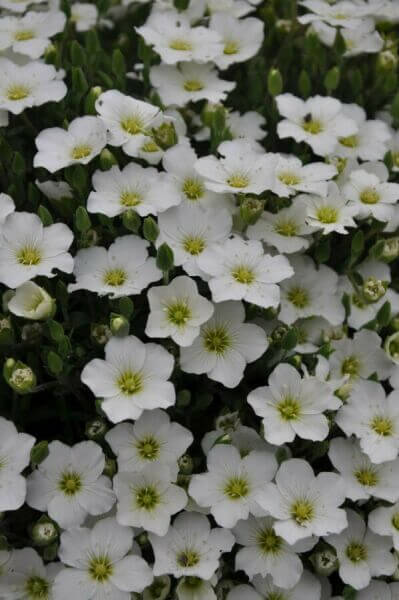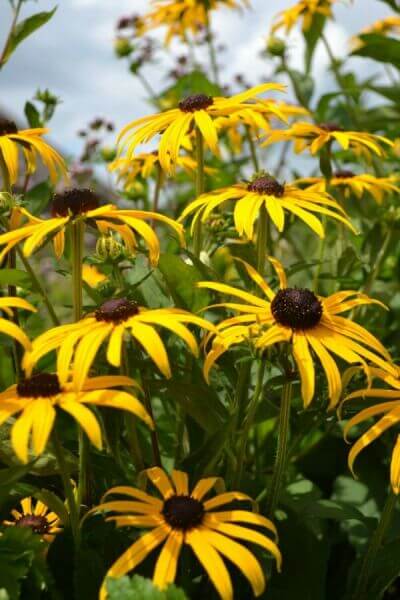Best Hedging Plants For Driveways
Boost your garden's allure with lavish hedge ranges such as Yew (Taxus), Thuja, Laurel, Photinia, and Bamboo, celebrated for their structural integrity and ecological advantages.
Yew and Thuja offer evergreen coverage and winter season durability, while Laurel offers fast development and broad, fragrant leaves.
Photinia adds seasonal beauty with its vibrant red foliage, and Bamboo lends a low-maintenance, tranquil atmosphere.
These hedges improve air quality, decrease sound, and create tranquil, personal spaces.
Appropriate planting, spacing, and upkeep ensure vigorous development and ecological harmony.
Check out how these lavish ranges can raise your garden's charm and wellness.
Secret Takeaways
Transform Your Garden With Lush Hedge Varieties
- Select Yew for its dense, evergreen development and unequaled durability.
- Choose Laurel for its fast development and broad leaves, making sure fast personal privacy.
- Choose Photinia for its vibrant seasonal foliage, which turns a striking dark red.
- Use Bamboo for a low-maintenance, winter-hardy hedge with visual appeal.
- Area plants 2-3 per meter and prune routinely for optimal development and health.
Popular Hedge Plants
When transforming a garden with rich hedge varieties, it's vital to consider popular hedge plants such as Yew, Thuja, Laurel, and Photinia due to their special attributes and benefits.
Yew (Taxus) is highly esteemed for its longevity and dense, green development, making it a prime option for withstanding landscapes.
Thuja is kept in mind for its evergreen foliage and robust winter durability.
Photinia includes seasonal vibrancy with red leaves that darken with time, developing vibrant visual appeal.
Laurel uses quick development and fragrant, broad leaves, suitable for quick privacy.
Additionally, Bamboo is an outstanding choice for atmosphere, using a low-maintenance, winter-hardy choice that improves the garden's visual with its sophisticated, swaying walking canes.
These choices cater to a range of horticultural requirements and preferences.
Benefits of Garden Hedges
Garden hedges use a wide variety of advantages, making them an important addition to any landscape. These natural barriers are cost-effective to implement and provide significant wind protection, improving air flow and contributing to noise reduction. The thick foliage of hedges like Thuja and Beech guarantees privacy by blocking visibility, developing a peaceful and remote environment.
Hedges also play a crucial function in microclimate regulation, offering a stable environment that promotes plant development and reduces temperature level changes. Their intricate leaf structures filter contaminants, improving air quality and contributing to a healthier garden environment.
Furthermore, hedges master noise decrease, absorbing and deflecting sound waves to lower ambient sound levels. This double functionality of offering both acoustic and visual privacy enhances the general harmony and aesthetic appeal of any garden.
Planting and Maintenance Tips
For an effective hedge, careful preparation of the planting area is vital. Make sure the soil has proper pH and drain to support strong root development.
Area the plants appropriately for the selected types. Water the hedge often during its preliminary growth stage, changing as needed with seasonal changes.
Execute a systematic insect control and illness avoidance strategy, using natural or chemical treatments when required. Regularly examine for aphids, termites, and fungal infections.
Apply mulch to maintain wetness and suppress weeds. Seasonal pruning promotes thick development and air circulation, important for plant health.
Following these standards will assist you cultivate a vibrant, well-kept hedge that boosts the appeal of your garden.
Spacing and Cutting Standards
Spacing and Cutting Standards
Proper spacing and trimming are crucial for cultivating healthy, visually appealing hedges. Adequate spacing ensures each plant receives sufficient nutrients, light, and airflow.
Follow these guidelines for optimal hedge maintenance:
- Spacing: Position hedge plants 2-3 plants per meter to motivate robust development.
- Pruning Strategies: Routine pruning is necessary for maintaining desired hedge height and shape. Trim new development in summertime and cut back older wood throughout winter.
- Seasonal Care: Adjust cutting techniques and schedules according to seasonal requirements to make sure plant health.
- Hedge Height: Routinely monitor and cut to maintain the wanted hedge height and accomplish consistent looks.
Sticking to these steps will guarantee your hedge thrives, improving both the appeal and functionality of your garden.
Selecting the Right Hedge
Picking the Right Hedge
Picking the appropriate hedge includes examining elements such as mature height, foliage density, and environmental strength. Successful hedge plant choice requires understanding each species' development qualities and site-specific flexibility.
For example, Yew (Taxus) provides exceptional durability and dense growth, while Thuja is noteworthy for its winter durability. Additionally, thinking about maintenance requirements is important; fast-growing types like Laurel or Privet demand routine cutting, whereas low-maintenance options like Bamboo or Ivy might be more effective for those looking for minimal upkeep.
Ecological aspects such as soil type, light schedule, and wetness conditions should also guide the selection process. This careful approach ensures the chosen hedges will thrive, providing both aesthetic and practical advantages to the garden landscape.
Shipment and Planting Suggestions
To guarantee your hedge plants prosper, they must be delivered by specialized couriers and planted promptly upon arrival.
Follow these important steps for successful planting:
- Soil Preparation: Enhance the soil with organic matter to improve drainage and nutrient material.
- Planting Depth: Develop a trench two times the width and equal to the depth of the root ball.
- Watering Techniques: Water completely after planting, keeping the soil regularly damp however not filled.
- Mulching: Use a layer of mulch to keep moisture and reduce weeds.
Consumer Support and Service
Given the vital function of prompt assistance in horticultural pursuits, our consumer support team is offered six days a week through telephone, e-mail, and social media to use professional advice and promptly deal with any issues. Their commitment to quick reaction times ensures consumer satisfaction by solving queries associated with plant health, optimum planting approaches, and maintenance schedules.

Telephone
6 days a week
Within 24 hr
This detailed assistance system, reinforced by a stellar 9.3/ 10 client score, highlights our dedication to boosting the gardening experience for every single client.
Frequently Asked Questions
How Long Does It Take for Hedge Plants to Establish?
Hedge plants generally require one to three years to become fully established, with the exact duration differing by types and growing conditions.
Reliable care throughout this important duration is vital for robust development. Consistent watering, watchful weed control, and appropriate fertilizer application are pivotal more info in promoting strong root advancement.
For instance, fast-growing types like Laurel might establish faster, while slower-growing varieties such as Yew may take longer. Thorough upkeep accelerates the establishment procedure, leading to dense and healthy hedges.
What Are the Best Hedge Plants for Personal Privacy?
The concern of the very best hedge plants for privacy includes assessing evergreen and deciduous choices.
Evergreen hedges like Thuja, Laurel, and Cypress provide year-round protection, guaranteeing continuous personal privacy.
On the other hand, deciduous hedges such as Beech provide seasonal privacy, shedding leaves in cooler months.
Key maintenance pointers for privacy hedges include routine trimming, fertilizing in spring, and correct spacing-- usually 2 to 3 plants per meter.
Additionally, constant watering and persistent weed removal are vital for promoting healthy, dense development.
Can Hedge Plants Draw In Wildlife to My Garden?
Yes, hedge plants can attract wildlife to your garden by supplying important advantages like shelter, food, and nesting sites, therefore improving local biodiversity. For example, yew, holly, and laurel are excellent for drawing in birds, while ivy supports a variety of bugs.
Nevertheless, it is very important to keep in mind that there are some drawbacks, such as increased upkeep to manage insects and routine maintenance. Thoroughly selecting and keeping hedge varieties can assist balance these disadvantages and advantages, ultimately promoting a vibrant and sustainable environment in your garden.
Are There Any Flowering Hedge Plants Available?
Yes, there are flowering hedge plants readily available that can enhance the charm of your garden.
For instance, Elaeagnus, likewise called Olive Willow, produces aromatic white flowers in the fall, including a touch of beauty.
Photinia, another popular option, showcases vibrant red leaves that develop into an abundant green, developing a vibrant visual result throughout the seasons.
To guarantee these plants grow, it's important to practice correct pruning strategies and seasonal maintenance, such as cutting new growth in the summertime and cutting down in the winter.
These measures will help preserve the health and visual appeal of your blooming hedges.
How Do I Avoid Pests in My Hedge Plants?
To prevent pests in hedge plants, employ natural insect control techniques and keep correct hedge care. Present advantageous bugs like ladybugs, which take advantage of hazardous insects, to produce a well balanced community.
Routinely examine your hedges for signs of invasion and without delay get rid of any afflicted parts to avoid the spread. Guarantee the health of your hedges by applying balanced fertilizers and providing appropriate water.
Use mulching to keep soil moisture and proper spacing to decrease plant stress and promote robust development. These practices jointly help in reducing pest concerns and keeping a healthy hedge.
Conclusion
In essence, selecting the right hedge ranges such as Yew, Thuja, and Laurel can change any garden into a serene sanctuary. These plants offer year-round greenery, enhance visual appeal, and offer practical benefits like noise reduction and wind protection.
Correct planting methods, accurate spacing, constant watering, and seasonal trimming are vital for optimum growth.
Reputable delivery services and skilled client assistance make sure a seamless experience from purchase to planting, making it easier than ever to raise your outdoor area.
Garden hedges offer a wide variety of benefits, making them a valuable addition to any landscape. These natural barriers are cost-effective to carry out and provide substantial wind protection, boosting air circulation and contributing to sound reduction. The dense foliage of hedges like Thuja and Beech makes sure privacy by blocking visibility, creating a secluded and tranquil environment.

Pruning Methods: Regular pruning is essential for keeping wanted hedge height and shape. Trim new development in summertime and cut back older wood during winter season.